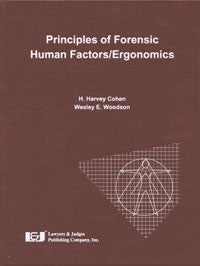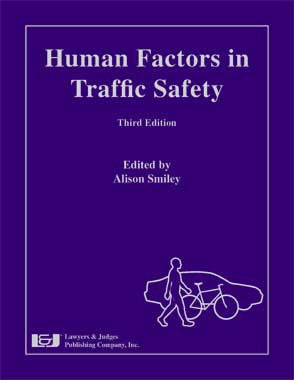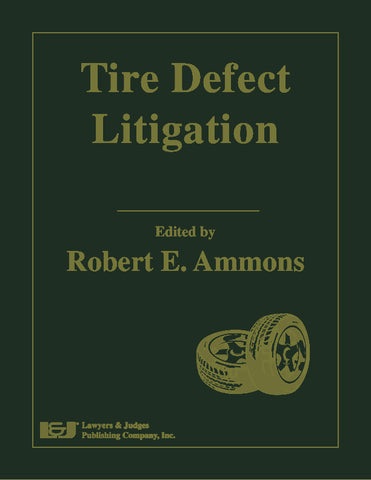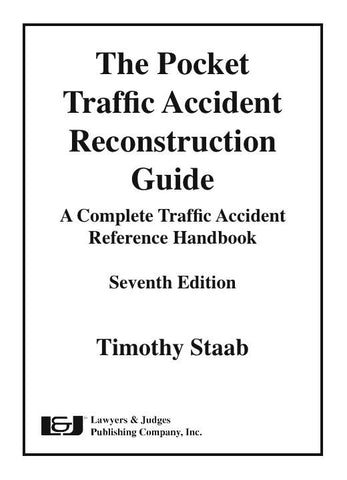
Principles of Forensic Human Factors/Ergonomics
- Author: Wesley E. Woodson & H. Harvey Cohen
- ISBN 10: 1-933264-09-8
- ISBN 13: 978-1-933264-09-7
- Copyright Date Ed: July 8, 2005
- Pages: 275 pages
- Binding Information: Hardcover
- Size: 8.5 ✕ 11 Inches (US)
A wealth of information on the real world of machines, consumer products and operational environments.
Your client's personal injury: Did a design flaw encourage misuse of a product? Human factors or ergonomics, as it is otherwise known, is a groundbreaking area too often ignored or misunderstood by lawyers, engineers and other design or safety professionals. Often a designer’s error encourages mistakes or misuse. Unfortunately, when trying these personal injury and products liability cases, legal professionals often pre-determine the "human factors" based on their own ability to use a product or operate in a particular environment. Since lawyers and other experts are human, they feel that they intuitively know about all human factors. The result? Many fail when trying personal injury cases, even though a thorough knowledge of human factors/ergonomics could have meant a successful verdict.
Principles of Forensic Human Factors/Ergonomics (revised edition of Human Factors Engineering for Forensic and Safety Specialists) is an excellent resource because it takes you step-by-step over the areas of concern. You’ll get an in-depth look at the human factors issues involved in such systems as architecture, transportation, consumer products, equipment and tools, areas in which questions of safety are most common. In addition, you’ll discover how to separate the situation in which the product design is at fault from those situations where the injured is at fault due to carelessness or misconduct.
This book is also available as an eBook. Click here to purchase and download:
Table of Contents:
Chapter 1: Personal Safety and the Concept of Design-induced Human Error and Product Mis-use
Chapter 2: User/Product Interface and Environmental Influences that Interact to Produce Safety Scenarios
2.1 General Safe Design Principles
2.2 Falls
2.3 Obstructions and Collisions
2.4 Visual Characteristics and Limitations vs. What Should be Seen
2.5 Interpreting What is Seen
2.6 Sensory-Motor Factors and Design of Controls— Can it be Manipulated?
2.7 Design Errors in Selection of Control Hardware
2.8 Conclusion
Chapter 3: User Limiting Characteristics that Designers Must Consider in Design of Consumer Products
3.1 Introduction
3.2 Safety and System Effectiveness: Can the User Easily Use a Proposed Safety System, Use it Properly, and Expect the System To Perform as Planned?
3.3 Hidden Operator/Product Safety Booby Traps
3.4 Human Body Dimensions: Will it Fit?
3.5 Sensory-Motor Response: Characteristics and Limitations
3.6 Physiologic Factors
3.7 Summary
3.8 Conclusion
Chapter 4: Architectural Systems
4.1 Introduction
4.2 Site Selection and Layout
4.3 Individual Building or Facility Planning to Minimize Accidents
4.4 Design of Individual Architectural Features to Reduce Mis-use
4.5 Conclusion
Chapter 5: Vehicular-Roadway and Other Transportation Systems
5.1 Introduction
5.2 The Question of Safety Standards
5.3 In the Courtroom
5.4 Common Automotive System Design Failures
5.5 The General Vehicle Ingress/Egress Problem
5.6 Vehicle Service and Maintenance Hazards
5.7 Common Street, Road, and Highway Design Failures
5.8 Common Commercial and Private Aircraft System Design
5.9 Safety Problems for Mobile Agricultural, Construction and Industrial Equipment, and Trucks
Chapter 6: Consumer Products and Tools
6.1 Introduction
6.2 Large Appliances
6.3 Small Appliances and Tools
6.4 Toys
Chapter 7: Home and Work Furnishings and Equipment
7.1 Introduction
7.2 Chairs, Seats, Stools, and Benches
7.3 Tables, Workbenches, Counters
7.4 Bookcases, Filing, and Storage Cabinets
7.5 Workplace Configurations
Chapter 8: Graphics
8.1 Introduction
8.2 Critical Graphics Functional Objectives
8.3 General Principles for Product Labeling
Chapter 9: Human Factors/Ergonomics Tests
9.1 Introduction
9.2 Architecture
9.3 Types of HF/E Tests Pertinent to Architecture
9.4 Vehicular and Roadways
9.5 Tests Appropriate to Automotive Design
9.6 Tests Appropriate to Aircraft Design
9.7 Tests Appropriate to Roadway Design
9.8 Commercial, Construction, and Farm Vehicles
9.9 Consumer and Commercial Test Methodology Evaluation




